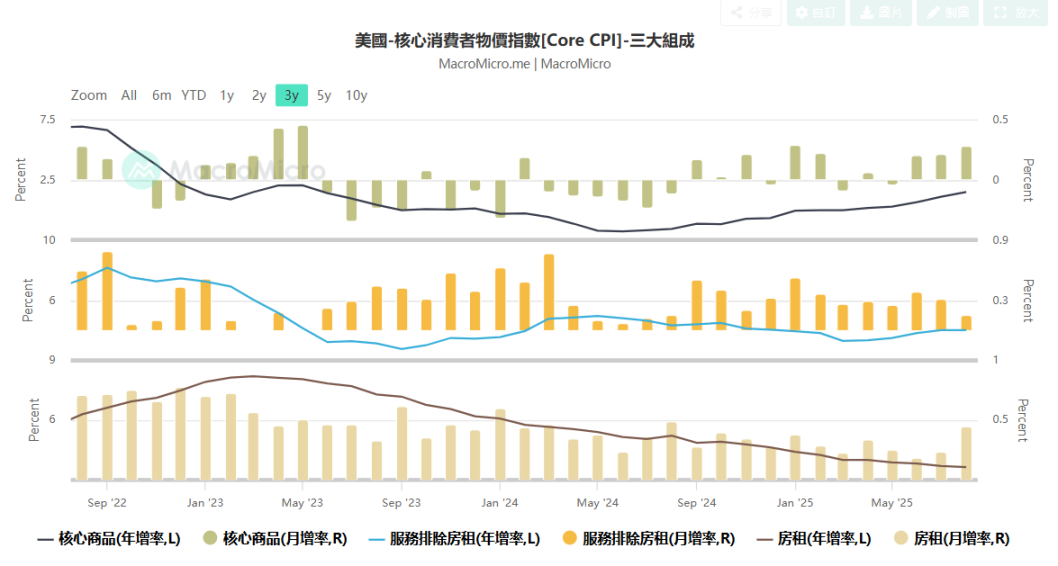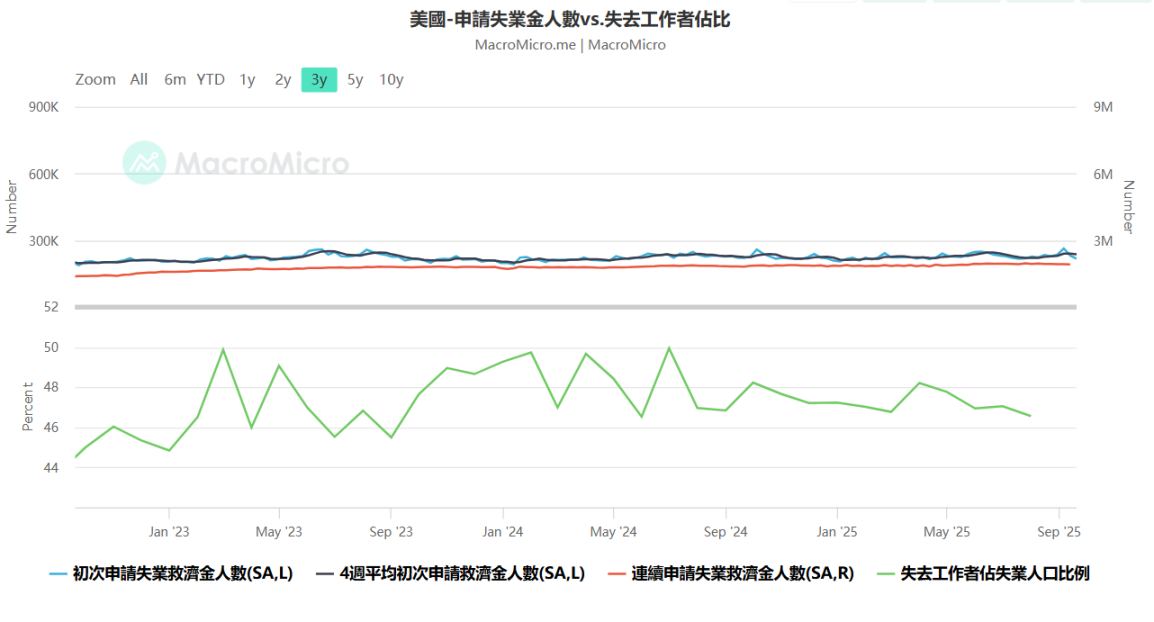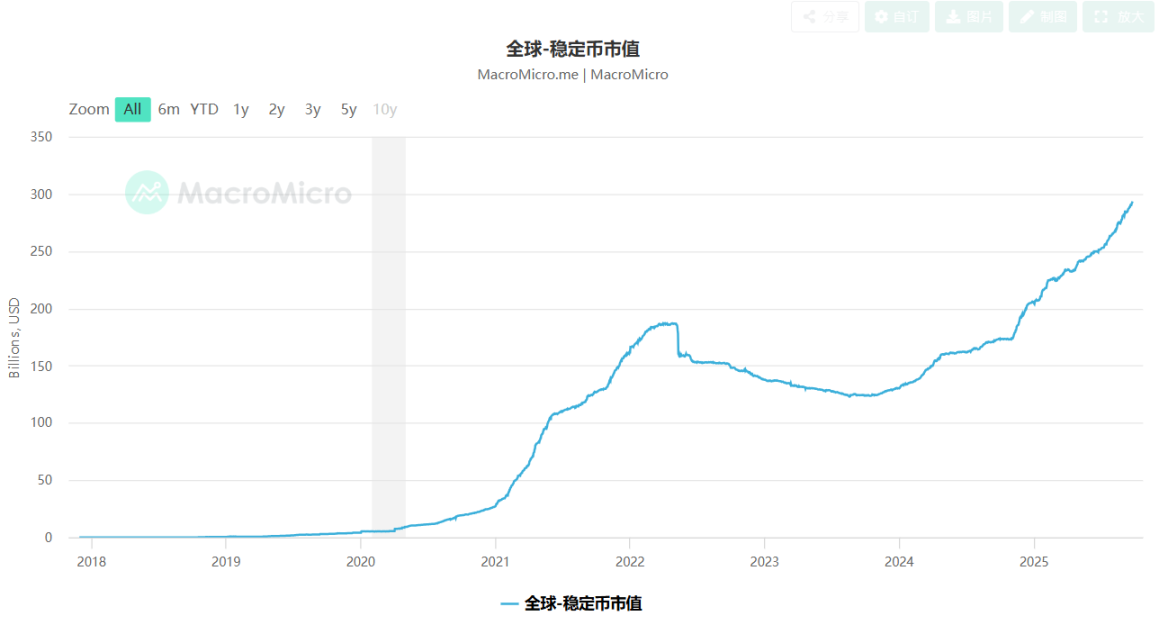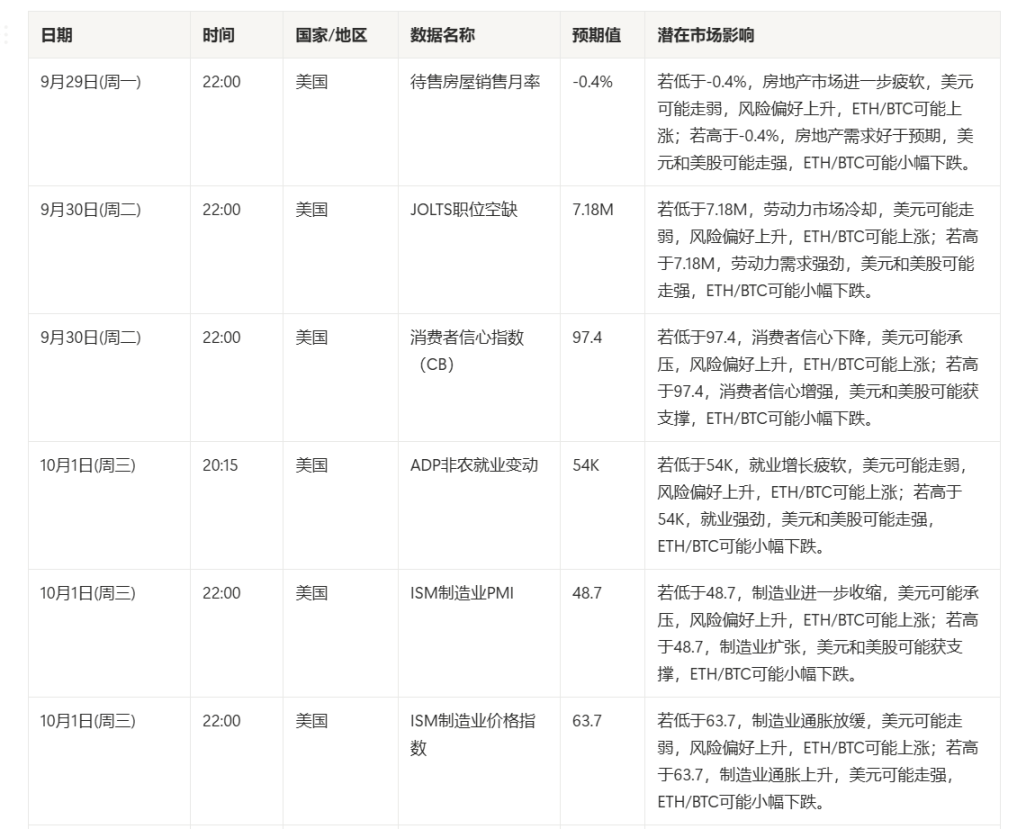1. The Real Economy Under Tariffs: Trade Shifts and Data Pressures
Since the implementation of reciprocal tariffs on August 7, the global trade landscape has undergone significant changes. U.S. imports have sharply declined, global manufacturing PMI has entered a contraction zone, and the growth momentum of the real economy has noticeably weakened. However, the "trade shift" effect triggered by tariffs is becoming evident—while China's exports to the U.S. have cooled, exports to ASEAN are showing rapid growth, becoming an important support to alleviate trade pressures.

Deeper impacts are being transmitted along the price and employment chain. The overall U.S. CPI appears stable, but core CPI continues to rise, with particularly notable increases in the prices of imported goods. The 100% pharmaceutical tariff set to take effect on October 1 is expected to further drive up prices of related goods, placing direct pressure on consumer spending.
The job market is also showing signs of fatigue: the manufacturing new orders index has only slightly rebounded, employment growth has slowed, and consumer confidence indices continue to decline. The University of Michigan's consumer confidence index for August is expected to be 55.4, down from last month's 58.2, and last month's data was already below the expected 58.6.

2. Intensified Capital Outflow: Migration from Risk Assets to Safe Havens
The uncertainty surrounding tariffs is amplifying capital outflow pressures, becoming a core factor affecting capital market sentiment. Funds are accelerating their exit from the higher-risk stock market, shifting towards high liquidity assets, forming a clear "defensive" migration characteristic. This migration is not only reflected in adjustments to traditional asset allocations but also exhibits a unique "bridging" effect in the cryptocurrency market.

Data from September shows that although the total market capitalization of the cryptocurrency market has shrunk, the structural characteristics of capital inflows are significant: stablecoins saw a monthly inflow of $2.5 billion, and Bitcoin ETFs had a net inflow of $1.5 billion. Behind this phenomenon is the proactive avoidance by enterprises and investors of the limitations of the traditional financial system—stablecoins (such as USDT/USDC) have become new tools for cross-border trade settlement, effectively hedging against exchange rate fluctuations and payment delay risks; meanwhile, Bitcoin is being endowed with "digital gold" attributes, becoming an important asset for hedging against inflation and geopolitical risks, which aligns closely with the current backdrop of global macroeconomic instability and recurring geopolitical conflicts.
3. Interwoven Macroeconomic Variables: Dual Disturbances of Policy and Liquidity
Behind the capital shift is a complex interplay of multiple macroeconomic variables, with the influence of Federal Reserve policy and the political deadlock in the U.S. being the most profound.

The current core trading logic in the market revolves around fluctuations in expectations for Federal Reserve interest rate cuts. The interest rate swap market predicts a 25 basis point cut on October 29, 2025, with a total of 50 basis points cut throughout the year, and another 50 basis points cut in 2026, maintaining a neutral rate at 3.25%.
However, economic data since September has shown "bearish" characteristics: August durable goods orders rose by 2.9%, and the final annualized quarterly GDP for the second quarter was up by 3.8%, both exceeding expectations and weakening rate cut predictions. Additionally, the Federal Reserve's reduction of $128.7 billion in assets during weeks 34-38 and continued reduction of U.S. Treasury holdings have further tightened market liquidity.

A more severe risk comes from the U.S. government shutdown crisis. The two parties are in sharp opposition over the temporary spending bill, with the probability of a government shutdown soaring above 75%. The Senate's reconvening on September 29 becomes the last window of opportunity. If a shutdown occurs, the Bureau of Labor Statistics will close on October 1, leading to delays in the release of key data such as the employment report on October 4 and the CPI report on October 15, significantly increasing the difficulty of the Federal Reserve's decision-making at the end of October, and potentially disrupting the rate cut rhythm. Historical experience shows that after the 16-day government shutdown in 2013, data release delays continued for up to 51 days, and this uncertainty will exacerbate market volatility.
Liquidity tightening has become a reality that cannot be ignored. As of the week ending September 24, the balance of reserves in the U.S. banking system fell below $3 trillion, reaching the lowest level since January 2025, and the decline in cash assets of foreign banks is faster than that of domestic banks. Although the Federal Reserve has slowed the pace of balance sheet reduction, the dual effects of quantitative tightening and the Treasury's increased debt issuance continue to withdraw liquidity from the financial system, with key overnight rates rising from 4.08% to 4.09%, highlighting the pressure of rising financing costs.
4. Market Outlook: Data Windows and Opportunities for Crypto Assets
In the short term, the dense release of economic data will serve as a "touchstone" for market direction. From September 29 to October 3, the U.S. will successively announce core data such as pending home sales month-on-month, JOLTS job openings, ADP non-farm employment, ISM manufacturing PMI, and non-farm employment changes. Any deviation from expectations in these data could trigger fluctuations in the U.S. dollar and risk assets. For example, if the non-farm employment data on October 3 comes in below the expected 22K, the dollar may weaken, and ETH/BTC could see an increase; if it exceeds expectations, it may suppress the performance of crypto assets.
From a technical perspective in the crypto market, Bitcoin is currently in a critical adjustment phase: the daily chart shows a death cross near the zero axis, and the weekly death cross is expanding and preparing to challenge the previous low of 107200. It has retraced from its high for 7 weeks, with about 5 weeks remaining until the last 12-week retracement cycle. Theoretical calculations suggest that the bottom of the retracement may be in the range of 84500-89300. However, there is no need for excessive pessimism in the medium to long term, as global M2 has stopped declining and is rebounding, with its liquidity expected to transmit to Bitcoin around the week of October 12. If M2 continues to reach new highs, it is likely to drive Bitcoin's weekly chart to re-golden cross and achieve new highs.
Against the backdrop of macroeconomic instability and escalating geopolitical conflicts, the strategies of various countries involving quantitative easing and debt financing for military buildup may drive Bitcoin to form the fourth wave of weekly golden crosses within the monthly golden cross channel. For investors, the current adjustment period may harbor layout opportunities—if Bitcoin retraces to the expected bottom range and a golden cross signal appears on the daily chart, it will become a quality low-buy window within the monthly upward channel.
Conclusion
Tariff frictions are reshaping the global trade and capital flow landscape, with pressures on the real economy and uncertainties in the traditional financial system driving capital to seek refuge in crypto assets. Although the short-term market faces triple pressures from the Federal Reserve's policy swings, government shutdown risks, and technical adjustments, the "digital safe-haven" attributes of cryptocurrencies are continuously strengthening from the perspective of liquidity transmission cycles and asset allocation logic. In the upcoming dense data windows and policy nodes, closely tracking macro signals and changes in market structure will be key to seizing opportunities.
Written by: WolfDAO
免责声明:本文章仅代表作者个人观点,不代表本平台的立场和观点。本文章仅供信息分享,不构成对任何人的任何投资建议。用户与作者之间的任何争议,与本平台无关。如网页中刊载的文章或图片涉及侵权,请提供相关的权利证明和身份证明发送邮件到support@aicoin.com,本平台相关工作人员将会进行核查。




